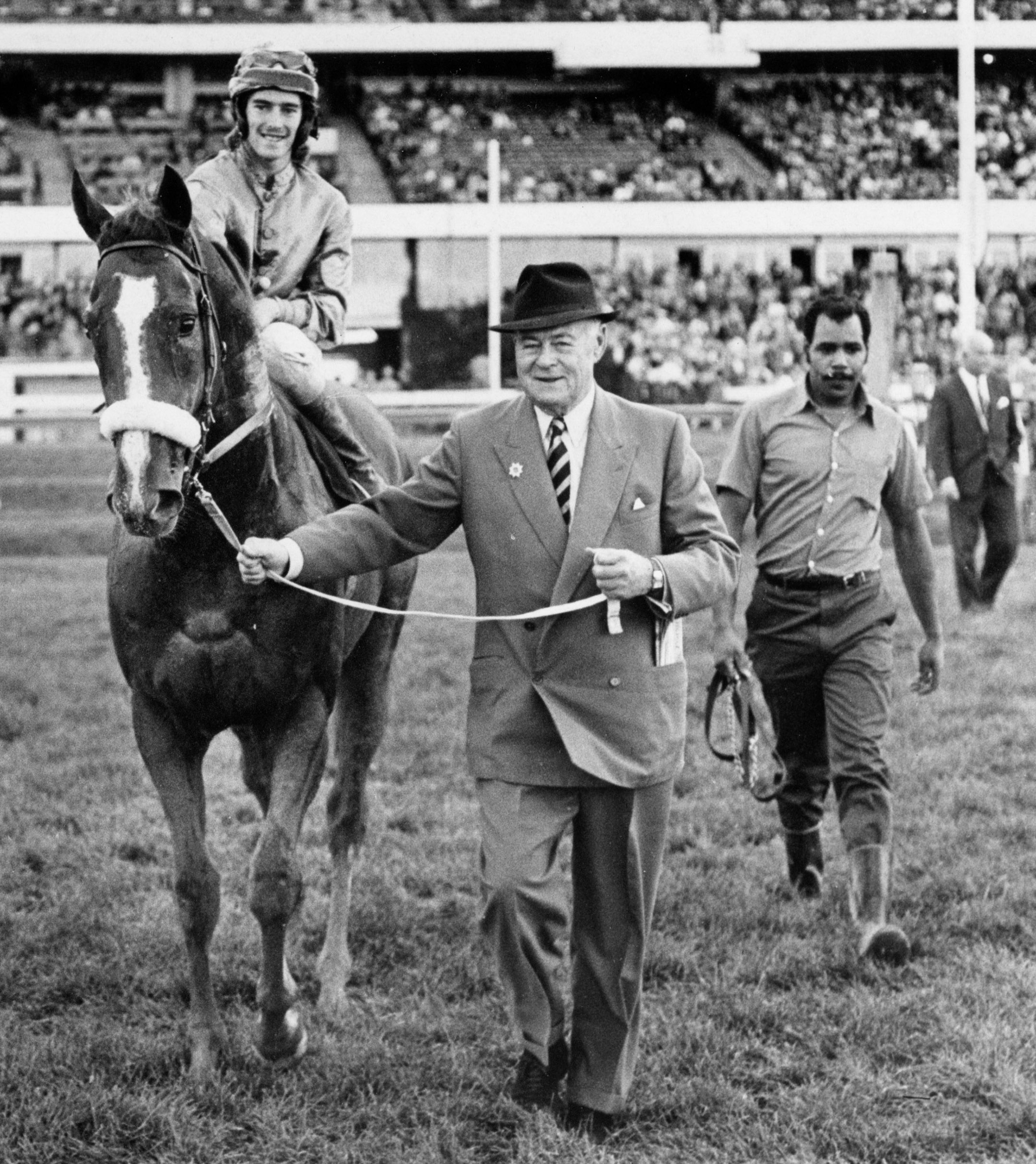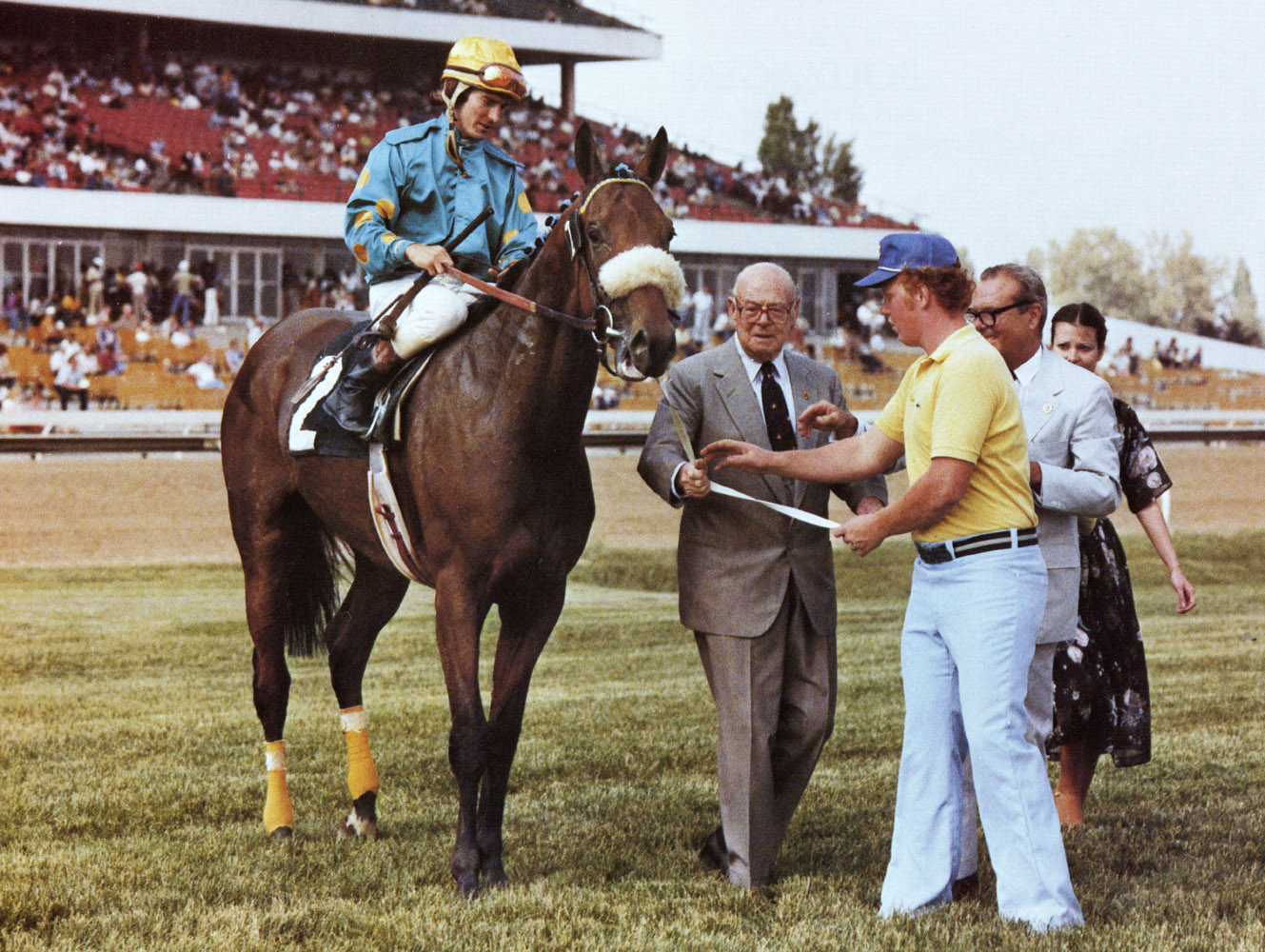Edward P. Taylor
Few figures in the history of thoroughbred racing have had as diverse an impact as Edward P. Taylor. The breeding, racing, and sales arms of the sport all benefited from his vision.

2014
Jan. 29, 1901, Ottawa, Ontario, Canada
May 14, 1989, Lyford Cay, Bahamas
Biography
Few figures in the history of thoroughbred racing have had as diverse an impact as Edward P. Taylor. The breeding, racing, and sales arms of the sport all benefited from his vision.
As an entrepreneur, Taylor had successfully consolidated the beer industry of Ontario, Canada, buying up a series of struggling breweries and creating prosperous companies. Looking at thoroughbred racing in the province, he saw a similar opportunity, and by eliminating several tracks he was able to set into motion a plan which resulted in the opening of the present Woodbine in 1956.
With the opening of Woodbine, all of Canada could take pride in having a racing facility that compared favorably with any in the world. On several occasions, Queen Elizabeth II visited Woodbine to present the trophy for the historic Queen’s Plate.
Born in 1901 in Ottawa, Taylor became interested in racing while a university student at Montreal’s McGill University. In those days, the Blue Bonnets track was in its heyday, with the likes of Exterminator and Billy Kelly crossing the border from the United States. Taylor became involved in racing in the 1930s, at the time of his consolidation of the brewing industry. He was interested in buying a brewery named Cosgrave, so he raced as Cosgrave Stable, figuring it would bring some attention to the company while sidestepping the prevailing laws against advertising alcohol.
Even before that, Taylor and a friend had succeeded in a venture to provide meter cab and bus service in Ottawa, the capital of Canada. This launched a business career which prompted Fortune magazine years later to describe Taylor as, although not the richest man in Canada, having “more of the influence of wealth than anyone else” in the nation.
Taylor originally owned a property named Windfields Farm in greater Toronto, but then purchased Parkwood Farm in Oshawa, some 60 miles away. He renamed the second farm National Stud, which he used for some years before applying the Windfields name to it, also. For a time he leased a farm in Kentucky, but abandoned that plan when he recognized that his Ontario foals caught up with his Kentucky foals fairly quickly. There was a sense of patriotism to his determination to prove that high-quality thoroughbreds could be produced in Canada.
Taylor set about buying bloodstock, and such stallions as Chop Chop and Menetrier helped him climb toward his goals. There were some breakthroughs such as Canadiana winning the Test Stakes and Vagrancy Handicap in New York and Victoria Park placing in the Kentucky Derby and Preakness in 1960.
The ultimate breakthrough, however, had been set into motion in 1952, when Taylor and trusted agent George Blackwell topped the Newmarket, England, December sale with the purchase of Lady Angela for 10,500 guineas. The Hyperion mare was in foal to Nearco, and Taylor left her in England to be returned to the great stallion. The second Nearco—Lady Angela foal was foaled in Canada and carried the name Nearctic to Horse of the Year honors there.
Mares bred to Nearctic in 1960 included Natalma, by Native Dancer, and a small, chunky but powerful colt foaled the next year would change the world. He was named Northern Dancer.
Taylor’s influence on Ontario racing did not end with creation of successful tracks. He also helped populate the available inventory of horses while creating successful stables for other local businessmen and sportsman. For years he held a pre-priced yearling sale. The yearlings would be on exhibition in a cocktail party setting and once buyers had spoken for half of them, the sale ended. Taylor kept the remaining half to race for Windfields.
Northern Dancer, bypassed at $25,000, made history by winning the Kentucky Derby and Preakness in 1964. Taylor had made his point, but even he could not imagine the far-reaching influence Northern Dancer would author. Northern Dancer came to rank among the great sires of the 20th century, his 147 stakes winners including English Triple Crown winner Nijinsky II and such other world-renowned stallions as Danzig, Storm Bird, Nureyev, Lyphard, and Sadler’s Wells. Taylor bred a number of Northern Dancer’s best. Illustrative of the enduring legacy was the prevalence of Sadler’s Wells’ son, Galileo, sire of 2014 Epsom Derby winner Australia.
With the success of Northern Dancer’s offspring in Europe, Taylor made the conscious decision to concentrate the best of his Windfields yearling consignments at Keeneland, and thus the Kentucky sale facility became a magnet for top European buyers to flock to the United States market as never before — one more service thanks to E. P. Taylor.
Taylor suffered a stroke in 1980 and his son, Charles, took the reins at Windfields. Three years earlier, Taylor had broken Harry Payne Whitney’s lifetime record by breeding his 193rd stakes winner. He was North America’s leading breeder in wins 19 times and in earnings nine times. Taylor died in 1989.
Achievements
Eclipse Award for Outstanding Breeder — 1977, 1983
North America's leading breeder in wins — 1960, 1961, 1962, 1963, 1964, 1965, 1966, 1968, 1969, 1977, 1978, 1979, 1980, 1981, 1982, 1983, 1983, 1984, 1985
North America's leading breeder in earnings — 1974, 1975, 1976, 1977, 1978, 1979, 1980, 1983, 1985
Triple Crown Highlights
Won the 1964 Kentucky Derby — Northern Dancer
Won the 1964 Preakness Stakes — Northern Dancer
Other Highlights
Bred more than 300 stakes winners worldwide, including 54 champions
Inducted into the Canadian Horse Racing Hall of Fame — 1976
Media






